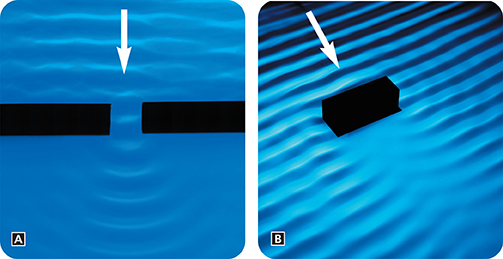Figure 11 A Mechanical waves, like the water waves shown here, diffract as they move past an obstacle or through an opening. A This wave diffracts, or spreads out, after it passes through a narrow opening. B Diffraction also occurs when a wave encounters an obstacle.

Diffraction
Diffraction (dih FRAK shun) is the bending of a wave as it moves around an obstacle or passes through a narrow opening. Figure 11A shows how water waves spread out as they pass through a narrow opening. The pattern produced is very similar to the circular ripples you see when a pebble is tossed into a pond. Diffraction also occurs when waves bend around an obstacle, as shown in Figure 11B.
 A wave diffracts more if its wavelength is large compared to the size of an opening or obstacle. If the wavelength is small compared to the opening or obstacle, the wave bends very little. The larger the wavelength is compared to the size to the opening or obstacle, the more the wave diffracts.
A wave diffracts more if its wavelength is large compared to the size of an opening or obstacle. If the wavelength is small compared to the opening or obstacle, the wave bends very little. The larger the wavelength is compared to the size to the opening or obstacle, the more the wave diffracts.
 What is diffraction?
What is diffraction?
Interference
If two balls collide, they cannot continue on their original paths as if they had never met. But waves can occupy the same region of space and then continue on. Interference occurs when two or more waves overlap and combine together.  Two types of interference are constructive interference and destructive interference. The displacements of waves combine to increase amplitude in constructive interference and to decrease amplitude in destructive interference.
Two types of interference are constructive interference and destructive interference. The displacements of waves combine to increase amplitude in constructive interference and to decrease amplitude in destructive interference.





